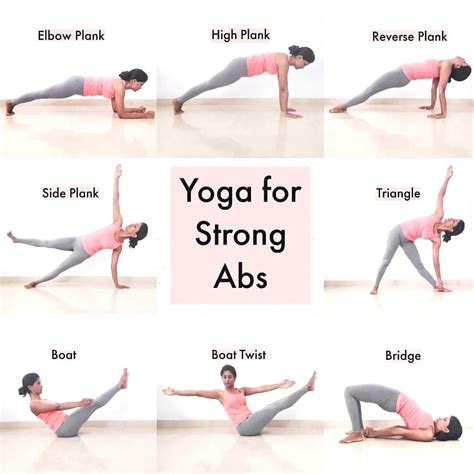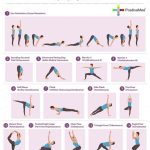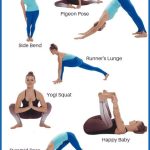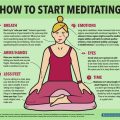Optimizing Yoga for Muscle Strength: Proven Techniques and Strategies
Yoga is often celebrated for its flexibility and mindfulness benefits, but can it also build muscle strength effectively? This article delves into the science and practice of using yoga as a muscle-strengthening regimen. We’ll explore the techniques that work best, offer historical context on yoga’s evolving roles, discuss practical applications, analyze case studies, and more. Whether you’re a seasoned yogi or a fitness beginner, this guide will equip you with insights on how yoga can help strengthen muscles across the body.
Introduction
Yoga has long been seen as a holistic practice, enhancing mind-body connection, flexibility, and overall well-being. However, one key question remains: can yoga truly build muscle strength comparable to traditional strength training? This guide explores how yoga can contribute to muscle development and which techniques are most effective for building strength.
Key Concepts
- Isometric Contraction: Holding poses (asanas) to build endurance and strength without dynamic movement.
- Progressive Overload: Gradually increasing the difficulty of poses to build strength over time.
- Muscle Activation: Engaging multiple muscle groups simultaneously, often in challenging balance poses.
- Alignment: Ensuring proper form to maximize muscle engagement and minimize injury risk.
Historical Context
While yoga’s roots lie in ancient India, where it was primarily used for spiritual and mental clarity, its evolution has seen a significant shift toward physical health benefits in the West. Over the past few decades, forms like Power Yoga and Ashtanga have been promoted for their physical intensity, paving the way for yoga’s recognition as a potential muscle-strengthening tool.
Current State Analysis
The current fitness landscape often separates yoga from weight training. Many view yoga as beneficial for flexibility and mindfulness, but not necessarily for muscle strength. However, research shows that specific yoga styles can effectively build strength if practiced with the right techniques. For example, a study published in the Journal of Strength and Conditioning Research found that participants practicing Vinyasa yoga showed significant strength improvements in both upper and lower body.
Practical Applications
To use yoga for muscle strengthening, it’s essential to focus on the following principles:
- Pose Variety: Mix static holds (such as Plank or Warrior II) with dynamic movements (Chaturanga Dandasana or Chair Pose to Standing) to engage different muscle fibers.
- Hold Duration: Increasing the duration of isometric holds can promote muscle endurance and strength.
- Controlled Movements: Performing slow, deliberate movements helps activate muscle fibers more effectively.
- Breathing Techniques: Coordinating breath with movement can deepen muscle engagement and increase focus during challenging poses.
Case Studies
Case studies help us understand how yoga can lead to muscle strengthening in real-world scenarios:
| Case Study | Practice Style | Results |
|---|---|---|
| Case 1: Power Yoga for Runners | Power Yoga | Significant strength gains in the lower body, particularly the quadriceps and hamstrings, resulting in improved running endurance. |
| Case 2: Upper Body Strength in Vinyasa Yoga | Vinyasa Yoga | Marked improvement in core strength and shoulder stability, leading to enhanced performance in push-ups and other bodyweight exercises. |
| Case 3: Ashtanga for Muscle Endurance | Ashtanga Yoga | Increased endurance in sustained poses, such as Plank and Downward Dog, with noticeable toning of the arms and abs. |
Stakeholder Analysis
Stakeholders in the yoga community include:
- Yoga Instructors: Educators who can promote muscle-strengthening techniques while ensuring correct alignment.
- Health and Fitness Enthusiasts: Individuals who are looking for a balance between flexibility, mindfulness, and strength development.
- Sports Trainers: Professionals integrating yoga into cross-training programs to enhance athletic performance and prevent injuries.
Implementation Guidelines
For those seeking to use yoga to build muscle strength, here are some guidelines:
- Choose the Right Style: Opt for strength-focused yoga styles such as Power Yoga or Ashtanga.
- Track Progress: Record the duration of holds and difficulty of poses to ensure progressive overload.
- Focus on Form: Prioritize proper alignment to maximize muscle engagement and avoid injury.
- Combine with Other Exercises: Pair yoga with complementary strength training exercises for well-rounded muscle development.
Ethical Considerations
Ethics in yoga practice often revolves around avoiding injury, promoting accessibility, and maintaining mindfulness. From a strength-training perspective, it’s important to:
- Avoid Pushing Beyond Limits: Muscle strengthening should be gradual, and individuals should respect their body’s capabilities.
- Injury Prevention: Instructors must ensure that students practice with proper alignment and modifications as needed.
Limitations and Future Research
Despite its benefits, yoga alone may not build muscle strength to the same degree as traditional weightlifting or resistance training. More research is needed to explore how yoga compares across different demographics and body types, as well as its long-term effects on muscle hypertrophy and strength development.
Expert Commentary
Yoga has evolved far beyond its roots as a spiritual practice, now encompassing a range of physical benefits, including muscle strength. However, as this article has shown, the effectiveness of yoga in building strength depends largely on how it’s practiced. By focusing on form, pose variety, and progressive overload, yoga can be a valuable component of a strength-training regimen. Whether it’s through Power Yoga’s dynamic sequences or Ashtanga’s intense holds, practitioners can harness yoga’s potential for building functional strength that goes beyond flexibility and mindfulness.








